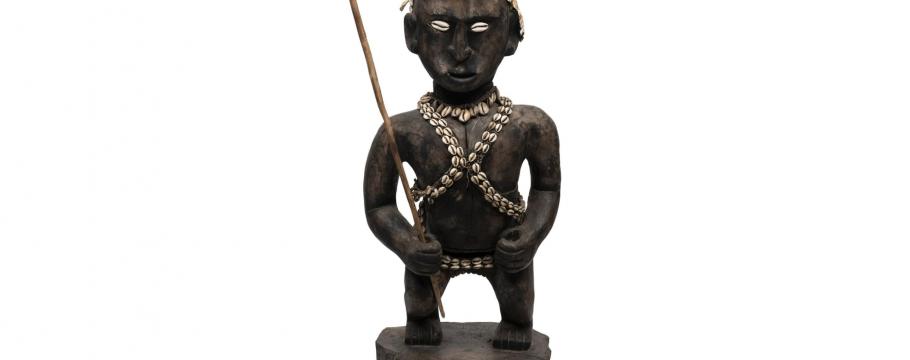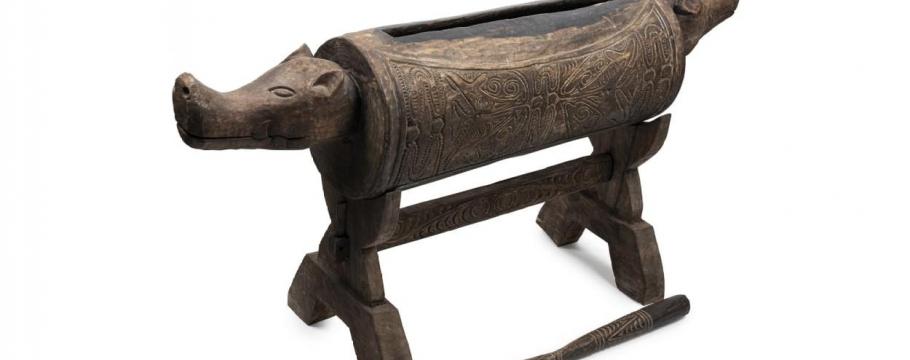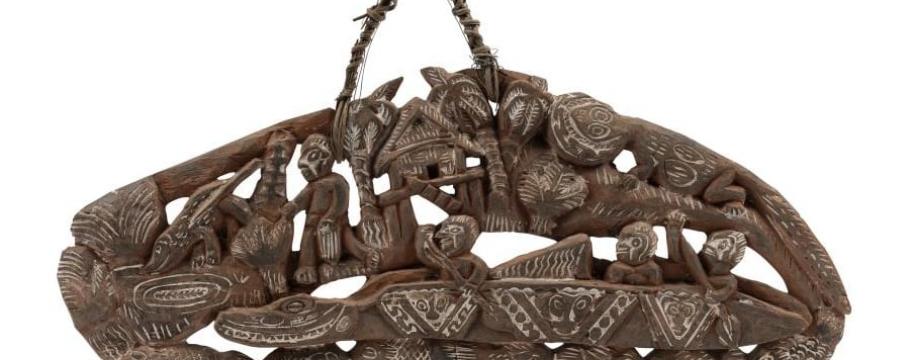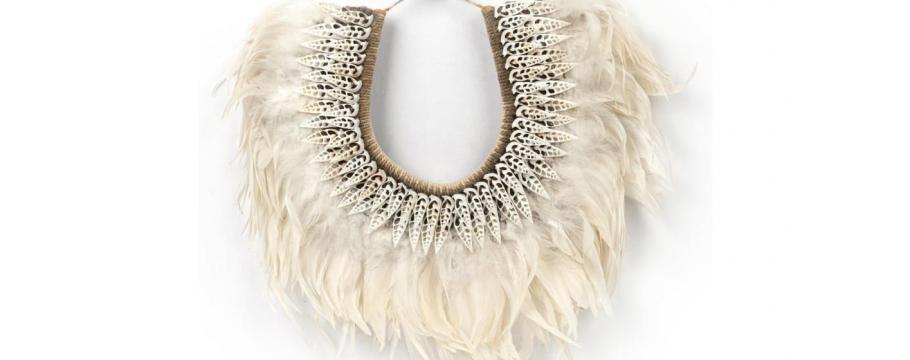








"Man catcher" a lethal auction collection reminder of PNG head hunters
Author: Richard Brewster | Posted: 13th June, 2023
It’s an horrendous instrument – a Papua New Guinea head hunter’s “man catcher”, comprising a sharpened wooden shaft with bamboo noose.
Innocuous looking but deadly, it was used to capture and enslave enemy tribe members by encircling the head, the razor-like point protruding into the back of the neck inflicting fatal injury if they continued to struggle.
The “man catcher” is lot 1683 in Melbourne-based Abacus Auctions forthcoming three-day sale of stamps, postal, history, coins and banknotes, sporting memorabilia and other collectables from 11am Wednesday June 28 to Friday June 30 at 29 Hardner Road, Mount Waverley – and part of a 130-lot collection of Papua New Guinea tribal artefacts assembled by German builder and cabinetmaker Ottmar Maier who lived and worked there from 1958 to 1982.
Now 94, Ottmar migrated to Queensland with his family after his PNG work finished and believes it is time to pass on the remainder of his collection to other collectors equally as passionate.
He has already sold a large part to European museums including stone artefacts thousands of years old to the Frankfurt museum.
Born in 1929 in the small town of Sussen near Germany’s Black Forest, his family’s home was bombed during World War II.
After the war, Ottmar trained in construction and became involved with the Catholic Divine World Mission.
Through the mission, he was offered work as a builder in Papua New Guinea, still retaining some of its German economic links first forged in 1884 when the country formally annexed the northeast quarter of the island around Rabaul.
German control of the territory was relinquished in 1920, following a League of Nations (later United Nations) ruling handing over ongoing administration of PNG to Australia, until its independence in 1975.
After several years, Ottmar returned briefly to Germany where he met his wife. From 1964, another much longer work stint in PNG followed – back building houses and teaching woodwork, and raising three sons.
Collecting tribal artefacts was sparked shortly after he first arrived on the island by meeting a local Catholic priest who already was a passionate collector.
Much of Ottmar’s collection was a direct result of meetings with tribesmen, who would exchange artefacts in return for him sharpening their swords, although some were obtained at PNG highland shows or made by his students.
The auction collection is remarkable for its authenticity, diversity and fearsome weaponry – such as the Admiralty Islands sword crafted from a saw shark bill with 21 external teeth (lot 1681) or the Lorengau fighting pick carved from a single piece of wood (lot 1680).
A collection highlight is a Lower Sepik standing male, dubbed “Protector of Gardens/Punisher of the Lawless” (lot 1737), again carved from a single piece with cowries for eyes and a woven textile head-piece fringed with dog teeth.
Equally important is the Sepik Ambunti full-length male figure with small spirit-like forehead figure, incised eyes and enormous nose creating a handle (lot 1753). From a men’s spirit house, the extended hands and feet on a fancy platter create a double meat hook.
Clever is the Western Sepik region slit drum or garamut (lot 1735), also a single carving with incised decoration and pig head at either end, and beating stick used for inter-village and more distant communication to announce meetings, issue warnings and for male initiation ceremonies.
The East Sepik wooden story board (lot 1748) is an eye-catching piece that will no doubt be sought by many genuine artefact collectors. Displayed in front of a “men only” meeting house, it has been crafted from buttress root and decorated with a war canoe featuring two paddlers and a passenger.
Several large war shields are in the collection including an Irian Jaya Dani people example made from a single piece of wood and decorated with natural earth pigments (lot 1717).
Another interesting item, also from Irian Jaya, is a Dani people (Asmat) woman’s coming of age (first menstruation) collar of tribal woven fabric adorned with white feathers and small shells (lot 1710).





